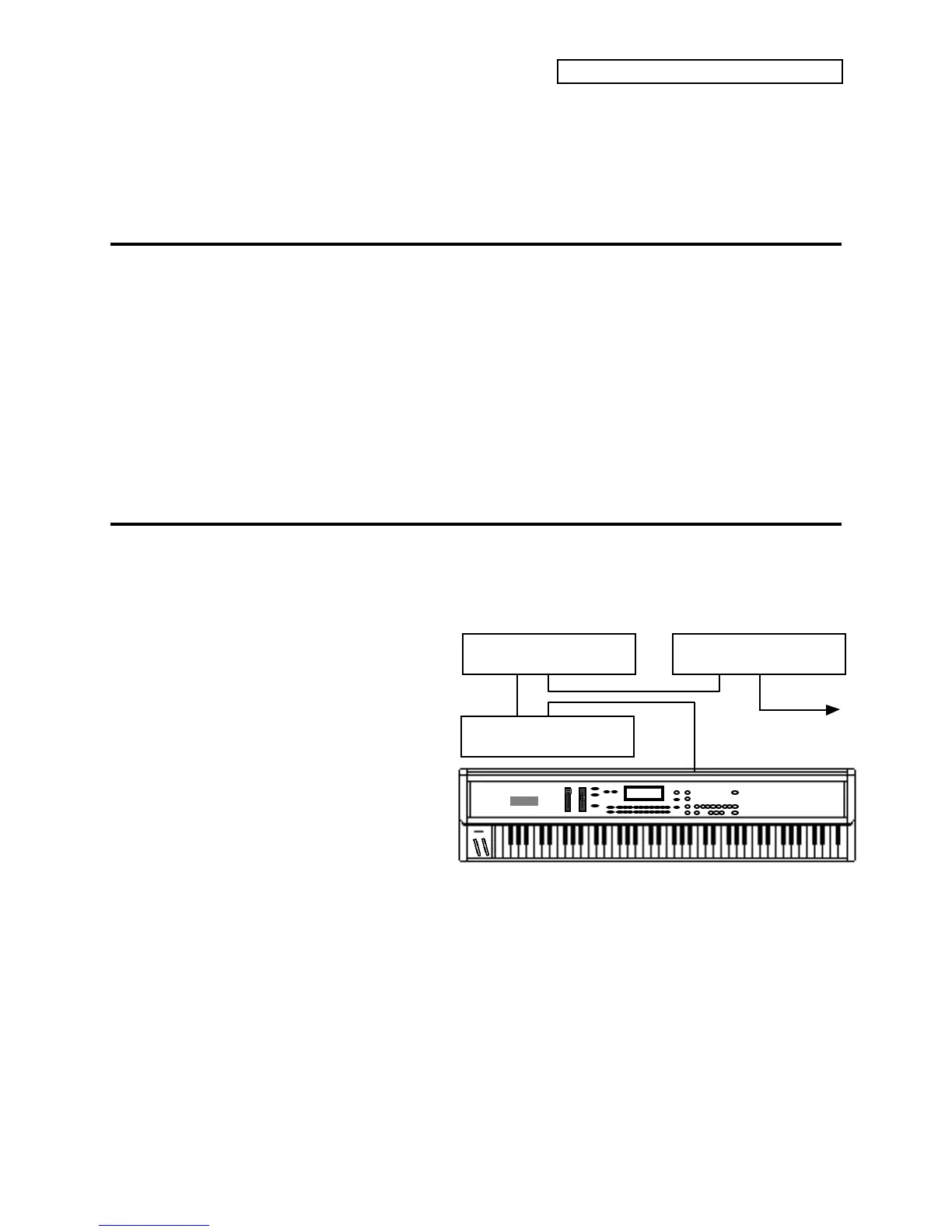Section 12 — The MIDI Connection
ENSONIQ KT Musician’s Manual 1
Section 12 — The MIDI Connection
This section gives you step by step procedures for using MIDI with the KT, covers some
advanced sequencer applications, and describes using the KT with external MIDI devices. This
section also offers an introduction and overview of General MIDI, and explains how to use it
with the KT.
About MIDI
MIDI stands for Musical Instrument Digital Interface — that magical connection that lets you
play one instrument (or a whole roomful of them) from another. MIDI is a standard that has
been agreed upon by manufacturers for translating musical events into specific numbers which
are transmitted and received by MIDI instruments.
For instance, when you play middle C on the KT, it instantly sends to its MIDI Out jack a series
of numbers representing a Key Down event, along with the location of the note on the keyboard
and how hard the key was struck. When you release the key, the KT sends a number meaning
Key Up. A MIDI instrument connected to the KT can receive and translate those numbers, and
will play the middle C. The same thing happens whenever you move a controller, such as the
Pitch or Mod Wheel, or when you select a new sound — each of these events is translated into a
series of numbers which are transmitted out the MIDI Out jack.
Controlling Remote MIDI Devices from the KT — MIDI Connections
You can use the KT sequencer to drive external MIDI devices, greatly enhancing the number of
available voices and timbres. On Edit Track page {5}, a sequence/preset or song track’s MIDI
status can be set to:
MIDI — so that it plays only out MIDI
LOCAL — so that it will play only
locally on the KT
BOTH — so that it will play a local
sound and send on its designated MIDI
channel.
When controlling multiple remote
MIDI devices, first connect the various
devices to the KT, and to each other, as
shown here. Connect a MIDI cable
from the MIDI Out jack of the KT to
the MIDI In jack of device #1. Then
connect the MIDI Thru jack of device
#1 to the MIDI In jack of device #2.
Connect the MIDI Thru jack of device
#2 to the MIDI In jack of device #3. And so on for as many devices as you will be using.
With this arrangement, once you set up the proper MIDI channels, etc., each remote MIDI device
will receive and play only the data that is intended for it, and will “pass along” all other data.
Also, each can be played from its own keyboard (as well as from the KT’s) without affecting the
others, because MIDI Thru jacks only pass along incoming MIDI data, and do not transmit what
is played on the instrument.
Remote MIDI Device #1
MIDI InMIDI Thru
MIDI In MIDI Thru MIDI In
To additional
MIDI Devices
MIDI Thru
Remote MIDI Device #2 Remote MIDI Device #3
MIDI Out

